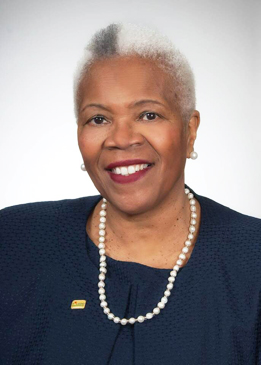
By State Rep. Paula Hicks-Hudson
Guest Column
During the COVID pandemic, physicians, nurses, and staff across the state of Ohio have been working in challenging conditions while treating patients and saving lives. While physicians and staff struggled to care for patients during the pandemic, some hospitals were taking advantage of federal policies intended to make health care affordable for uninsured and low-income patients.
The 340B Drug Pricing Program was intended for drug manufacturers to provide an almost 50 percent discount on prescription drugs to a small group of charity hospitals. These savings were to be passed onto the most vulnerable patients so they could access prescription drugs. However, the program has vague eligibility criteria and unclear definitions of how hospitals can use the savings. These loopholes have allowed hospitals to participate in the program without providing the level of charity care intended by the program’s design. The Pacific Research Institute (PRI) found that not only do “non-profit” 340B hospitals make 37% more in profits compared to the average of all hospitals, but these 340B hospitals that are supposed to provide charity care give 22% less of their net patient revenue to charity care than all hospitals.
In addition to these loopholes, 340B hospitals’ use of contract pharmacies has ballooned. Under the original program, hospitals were only allowed to contract with one pharmacy, but now they can contract with an unlimited number of pharmacies. The unfortunate reality is that in the current environment the 340B program incentivizes hospitals to figure out how to prescribe more drugs through their huge network of contract pharmacies while patients are paying up to three times the purchase price.
An analysis of the 340B program found that 57 percent of the hospitals surveyed did not provide discount drugs to low-income uninsured patients getting their medications at the hospital’s contract pharmacy.
PRI also found Ohio’s hospitals are making tens of millions of dollars in revenue and profit thanks to their low spending on charity care and massive networks of pharmacy contracts. For example, two hospitals the study analyzed in Ohio had 168 and 141 contract pharmacy arrangements. Both hospitals gave away meager amounts of their net patient revenue towards charity care: 0.66 percent and 1.36 percent, respectively. While the report did not include the hospitals in Lucas County, there is a need for better government oversight to ensure that these benefits reach their intended recipients.
Lastly, the number of 340B hospitals has expanded from 90 to 2,500 and the number of contract pharmacies increased from 1,300 to 30,000. The regulatory agency responsible for 340B oversight can’t keep up. In fact, based on the Government Accountability Office, hospitals were allowed to self-attest to the required documentation to participate in the program. Since mid-2020 many drug manufacturers have said that the lack of consistent regulations and baseless expansions of the 340B program has gone too far and have restricted drug discounts to 340B hospital pharmacies. In the last couple of months, hospitals, drug manufacturers, and the government have forced the courts to decide on this issue, but the courts have said they need help from Congress because 340B guidelines are too ambiguous.
The 340B program is worthy of being redesigned to make sure drug discounts are reaching the uninsured and low-income patients. Congress should take action to downsize the program and close loopholes so hospitals participating in the 340B program are providing the level of charity care in their community that the program intended.
